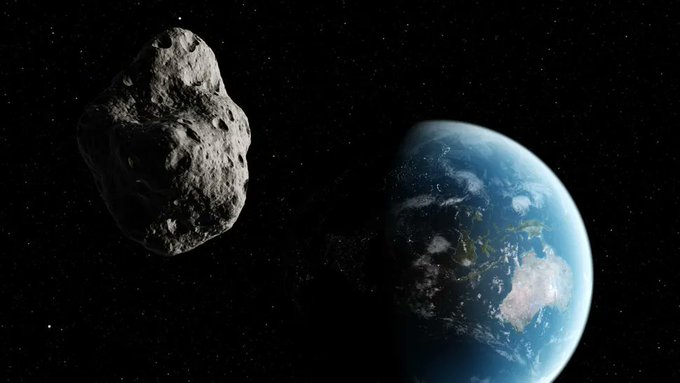On February 18, 2025, NASA updated its assessment of asteroid 2024 YR4, raising the probability of it striking Earth on December 22, 2032, to 3.1%. This marks a slight increase from the previous estimate of 2.7%, making it the highest impact risk recorded for any known asteroid to date. Discovered on December 27, 2024, by the NASA-funded Asteroid Terrestrial-impact Last Alert System (ATLAS) in Chile, this near-Earth object has captured the attention of astronomers worldwide due to its rare risk profile.
Estimated to be between 40 and 90 meters (130 to 300 feet) in diameter, 2024 YR4 is large enough to cause significant localized damage if it were to hit Earth. Experts suggest an impact could release energy equivalent to 7.8 megatons of TNT—hundreds of times more powerful than the Hiroshima bomb—potentially flattening a city-sized area. The asteroid’s “risk corridor” spans vast regions, including the eastern Pacific Ocean, northern South America, Africa, and South Asia, though its exact trajectory remains uncertain.
Currently rated at Level 3 on the Torino Impact Hazard Scale, 2024 YR4 is only the second asteroid to reach this level, following 99942 Apophis in 2004. While the odds of impact have risen, there’s still a 96.9% chance it will miss Earth entirely. NASA notes that such probabilities often fluctuate as more observations refine an asteroid’s orbit, and historically, additional data has reduced risks to zero for similar objects.
Astronomers are racing to gather more data before 2024 YR4 becomes too faint to observe by April 2025. The James Webb Space Telescope is slated to study it in March, offering insights into its size and composition. The asteroid won’t be visible again until June 2028, when it makes a close pass by Earth, providing a critical opportunity to reassess its path. If the risk persists, planetary defense measures, like those tested in NASA’s 2022 DART mission, could be considered to nudge it off course.
For now, scientists urge calm. “This is a situation we’re monitoring closely, but it’s not time to panic,” experts say, emphasizing the likelihood of a safe outcome as observations continue.





